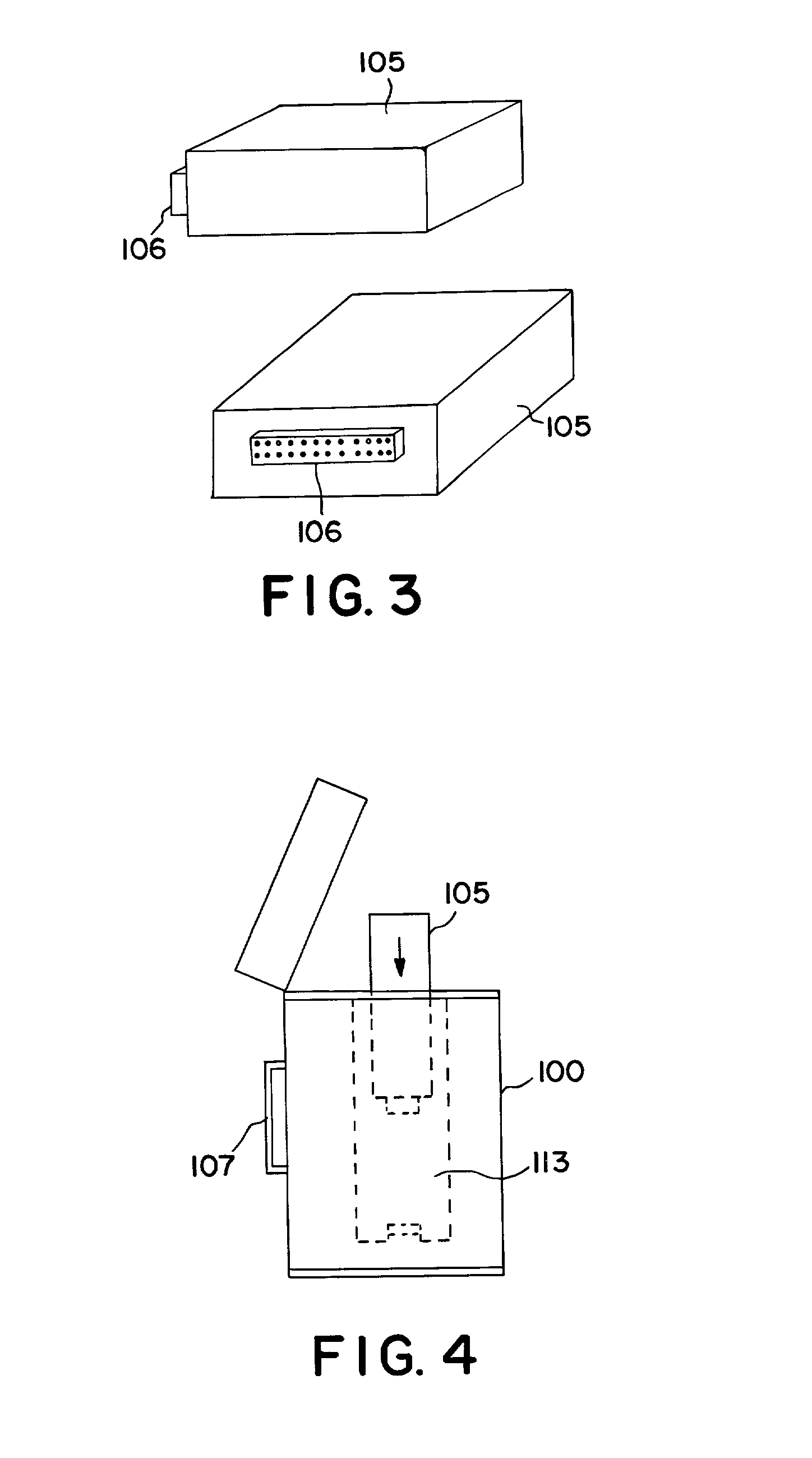[0002] The pervasiveness and efficiency of modem computers has expanded their role from a desktop tool for
document processing and application serving to a productivity enhancing tool for technical field workers to perform their job functions in a more efficient and comfortable manner. Their has been repeated affirmation in the marketplace of the gains in efficiency to be had from making computers mobile so that field workers can have the same
access to information and computing power that traditional
office workers have.
[0006] While these mobile computer systems have significantly enhanced productivity of mobile technical workers in fields such as manufacturing, inspection,
data acquisition,
remote sensing, and navigation, there are certain environments to which technicians are exposed which will not permit the use of ordinary computing equipment due to the ambient conditions. These conditions include
humidity, excessive heat,
moisture, vibration, ambient flammable gases, gas vapors and liquids. Of particular concern are environments in which flammable or volatile materials are present. Devices which can operate in these environments are known as Intrinsically Safe. According to the National Electric Code, 1990, Article 500, Class 1 environments, Flammable Gasses or Vapors, are locations in which flammable gases or vapors are or may be present in the air in quantities sufficient to produce explosive or ignitable mixtures. Class 1 is segmented into two divisions. A Class 1, Division 1 location is one in which ignitable concentrations of flammable gases or vapors may be present because: (1) they exist under normal operating conditions, (2) they exist frequently because of repair, maintenance operations, or leakage, (3) breakdown or faulty operation of equipment or process which causes simultaneous
electrical equipment failure. A Class 1, Division 2 location is one in which ignitable concentrations of flammable liquids or gases may be present as a result of: (1) an accidental rupture or breakdown of the normally closed containers, systems, or equipment, (2) a failure or abnormal operation of the venting equipment, (3) being located adjacent to a Class 1, Division 1 location from which ignitable concentrations of gases or vapors might occasionally be communicated. Within Divisions 1 and 2 there are four groupings of ambient atmospheres segmented by the type of materials present: Group A is atmospheres containing
acetylene, Group B is atmospheres containing
hydrogen, fuel and combustible process gases containing more then 30 percent
hydrogen by volume, or gases or vapors of equivalent
hazard such as butadiene,
ethylene oxide,
propylene oxide, and
acrolein, Group C is atmospheres such as
cyclopropane, ethyl
ether,
ethylene, or gases or vapors of equivalent
hazard, and Group D is atmospheres such as
acetone,
ammonia,
benzene,
butane,
ethanol,
gasoline,
hexane,
methanol,
methane,
natural gas, naptha,
propane or gases or vapors of equivalent
hazard. These environments are typical to the chemical, power, and
petrochemical industries. Workers in these environments are prevented from making use of
computer equipment that has not been rendered IS DIV 1 or DIV 2 due to the risk of explosion from spark generation.
[0007] Typically, to effect
intrinsic safety, devices are built from the component level up to be electrically insulated against sparking. This requires specialized components, limited production runs, re-
engineering of existing products and significantly increases the cost of devices. As a result, very few electronic items are built because manufactures and customers can not take
advantage of the economies of scale derived from commercial-off-the-shelf (hereinafter COTS) products to meet there IS needs.
[0015] In a preferred embodiment of the present invention, a person using the computer will take the core computer and insert it into the
enclosure of the present invention rendering the computer system created by the combination of the two components intrinsically safe (IS), according to class 1, division 1, division 2 or both of the U.S.
Electrical Code. The enclosure may also afford benefits such as prevention from water and
moisture,
humidity, shock, dust, and other ambient conditions. Preferably the enclosure is designed to be comfortably worn on the body of a user such as on a belt which is worn around the
waist torso or other suitable body part of the user. In this manner, the person could operate the computer in an environment, such as a
petrochemical refinery, where ambient volatile gases and vapors are present, without fear of spark or explosion caused by the computer. When the user leaves the volatile environment and returns to a stabile one, such as his
residence or his office, he can simply remove the core computer from the IS enclosure and insert it into a desktop, laptop, or other enclosure for access to any data collected or to perform any other computer operations.
[0019] In each embodiment, the common inventive feature is that the IS and ruggedized properties of the system created from the
mating of the core computer and the enclosure are derived from the external case itself. As a result, standard COTS electrical components may be used in the construction of the internal circuitry decreasing the cost and market acceptability of the product.
 Login to View More
Login to View More  Login to View More
Login to View More 


